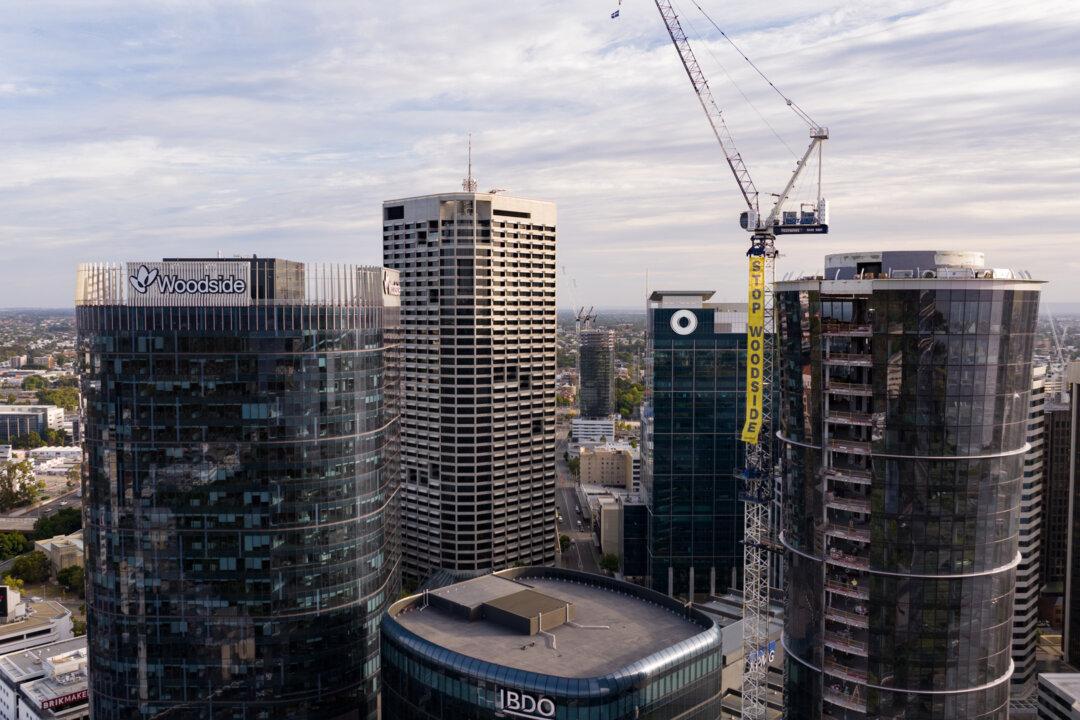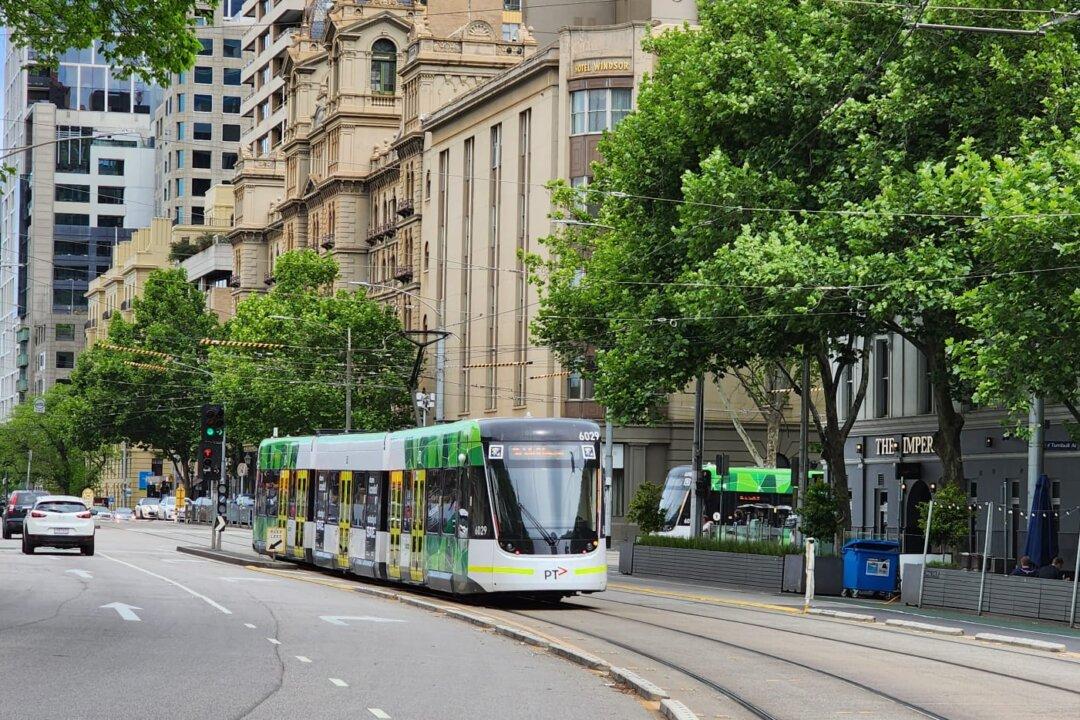Activists associated with climate campaigner Greenpeace Australia scaled a 140-metre-high crane opposite oil and gas producer Woodside Petroleum’s headquarters in Perth on Dec. 5.
Once reaching the top of the crane just after 6 a.m., the four protestors unveiled a yellow 25-metre vertical banner reading “Stop Woodside.”





